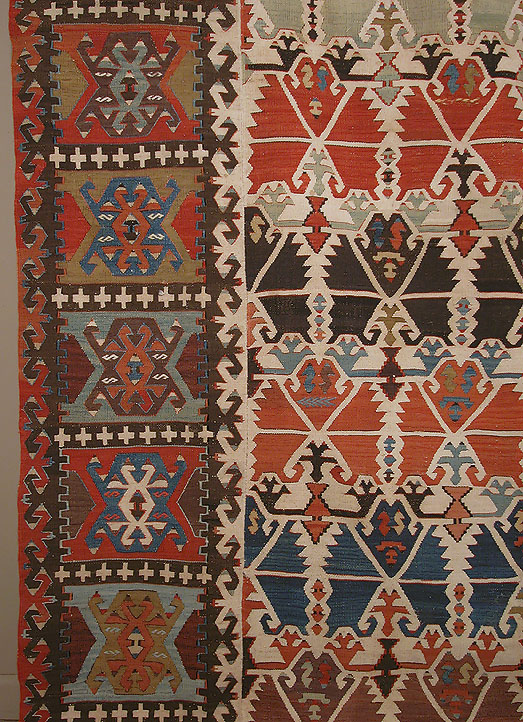|
Elibelinde
Elibelinde (Turkish for "hands on hips") is a Turkish motif of a hands-on-hips female figure. It is widely used on kilims (flat tapestry-woven carpets) and occurs in many variations. The arms of the figure are represented by two inward-facing hooks, while the body of the woman is represented by a triangle or diamond. The head is typically represented by a diamond. The Elibelinde is a symbol of fertility and motherhood. It is one of many kilim motifs commonly woven into Turkish flatweave rugs. Elibelinde1.svg, Elibelinde2.svg, Elibelinde3.svg, Elibelinde4.svg References {{Islamic art Turkish rugs and carpets ... [...More Info...] [...Related Items...] OR: [Wikipedia] [Google] [Baidu] |
Kilim
A kilim ( az, Kilim کیلیم; tr, Kilim; tm, Kilim; fa, گلیم ''Gilīm'') is a flat tapestry- woven carpet or rug traditionally produced in countries of the former Persian Empire, including Iran, the Balkans and the Turkic countries. Kilims can be purely decorative or can function as prayer rugs. Modern kilims are popular floor coverings in Western households. Etymology The term 'kilim' originates from the Persian ''galīm'' (گلیم) where it means 'to spread roughly', perhaps of Akkadian or Aramean origin. another name for Galim(Gilim) is Plas, Ferdowsi and other persian poet mentioned both Galim and plas as synonyms in Shahnameh No 35 mentioned as Plas(pluNo14 mentioned as Gali History Like Pile weave, pile carpets, kilim have been produced since ancient times. The explorer Mark Aurel Stein found kilims dating to at least the fourth or fifth century CE in Hotan, China: :"As kilims are much less durable than rugs that have a pile to protect the warp and weft, ... [...More Info...] [...Related Items...] OR: [Wikipedia] [Google] [Baidu] |
Kilim Motifs
Many motifs are used in traditional kilims, handmade flat-woven rugs, each with many variations. In Turkish Anatolia in particular, village women wove themes significant for their lives into their rugs, whether before marriage or during married life. Some motifs represent desires, such as for happiness and children; others, for protection against threats such as wolves (''to the flocks'') and scorpions, or against the evil eye. These motifs were often combined when woven into patterns on kilims. With the fading of tribal and village cultures in the 20th century, the meanings of kilim patterns have also faded. In these tribal societies, women wove kilims at different stages of their lives, choosing themes appropriate to their own circumstances. Some of the motifs used are widespread across Anatolia and sometimes across other regions of West Asia, but patterns vary between tribes and villages, and rugs often expressed personal and social meaning. Context A Turkish kilim is ... [...More Info...] [...Related Items...] OR: [Wikipedia] [Google] [Baidu] |
